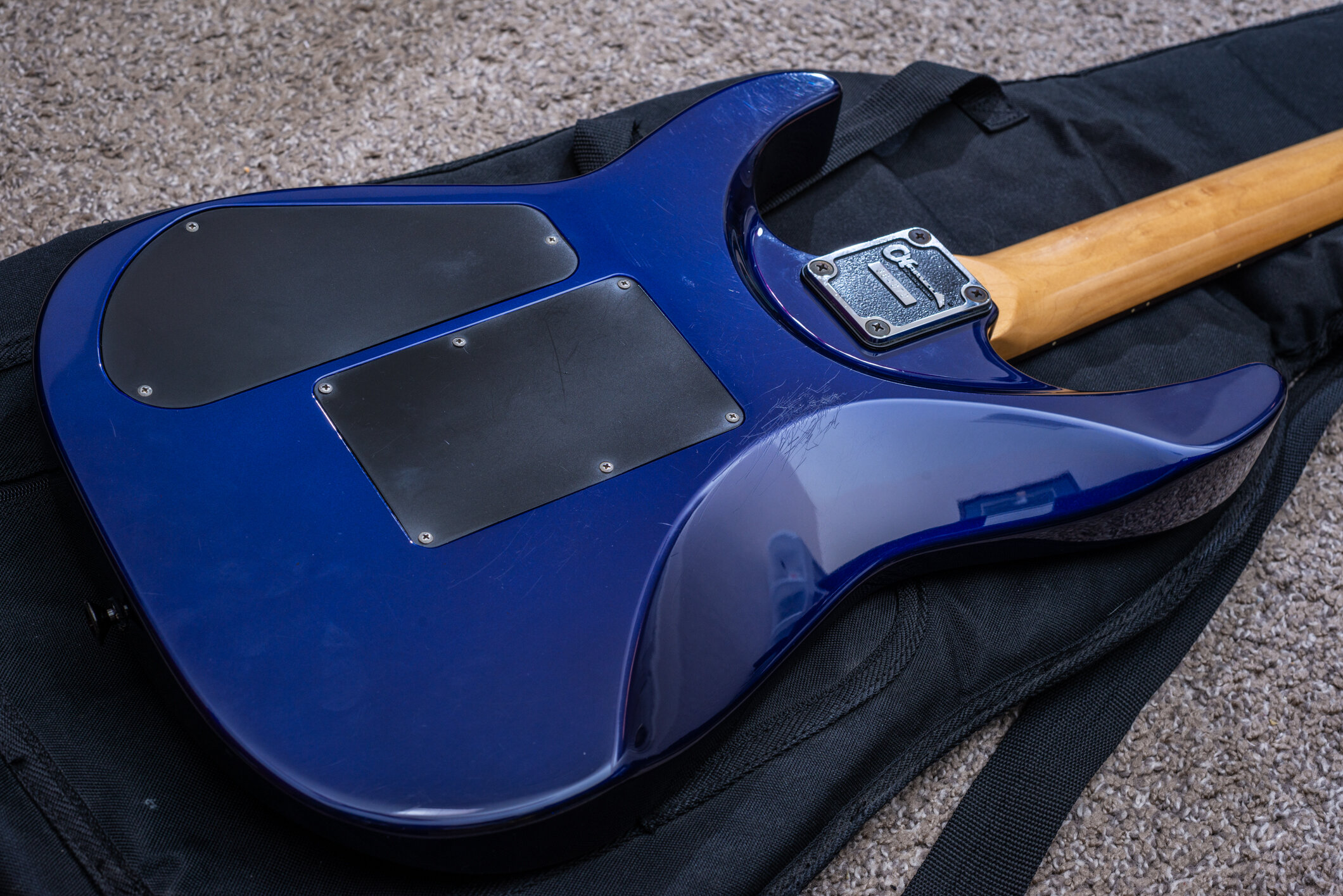1991 Charvel Fusion Custom
Details
I purchased this from the original owner via Reverb in 2018. I was excited by the idea of a short scale shredder with a cool body shape and rails pickups, and I was not disappointed. The J200R’s sound excellent, and although the factory wiring was parallel on both of them, I changed the neck to full series for more output, but left the middle in parallel which was a nice compromise for lighter clean tones. It arrived with a Dimarzio DP150 Double Whammy, an interesting pickup which is discontinued. The Double Whammy seems to be fashioned after a lower output ToneZone according to Dimarzio, with less bass. However, it does not have unequal length coil windings like that pickup (“Dual Resonance”) and based on my experience with it, it is more akin to a souped up PAF Pro, with good midrange emphasis and just a tad more output (330mv compared to 300 on the PAF Pro). This pickup was boxy sounding in this guitar, but I still have it and it serves well in a larger-bodied Kramer Pacer Custom now. Next, I swapped in a Dimarzio Super Distortion - a staple for many but a pickup I’ve never had before. I enjoyed this pickup and I remember it having an excellent sound with a little more fuzz than something like a JB, which seems to only have a little less output. However I felt that pickup overpowered the neck pickups, so I eventually worked my way back down to a Dimarzio FRED, which I love in the neck but consider to be only average in the bridge position. However, it sounded great in this guitar with a little grind when needed but overall a very polite tone.
This neck has a very cool matching headstock and feels a bit thinner than my 475 Deluxe, scale length aside, and that in turn feels a bit thinner than the Model 4’s made before that.
The other hardware is the usual for Charvels of this era, a Jackson JT-590 trem (this time actually stamped “Charvel”), Jackson tuners, and no special electronics on this model. This was near the end of this era for Charvel, as the perception was a drop in quality in the early 90s, and music taking a turn making guitars of this style fade out. This guitar has a serial plate that lacks the usual “Ft Worth TX USA,” likely due to more pressure from consumers on guitar makers obfuscating where the guitars were made. Nowadays we are all clearly aware that these models were all made in Japan, but at the time I think some casual players were under the impression that these were USA quality instruments. Charvel alone is not at fault here as many others were using similar tactics to sell their instruments.
I no longer own this instrument











